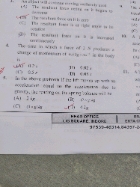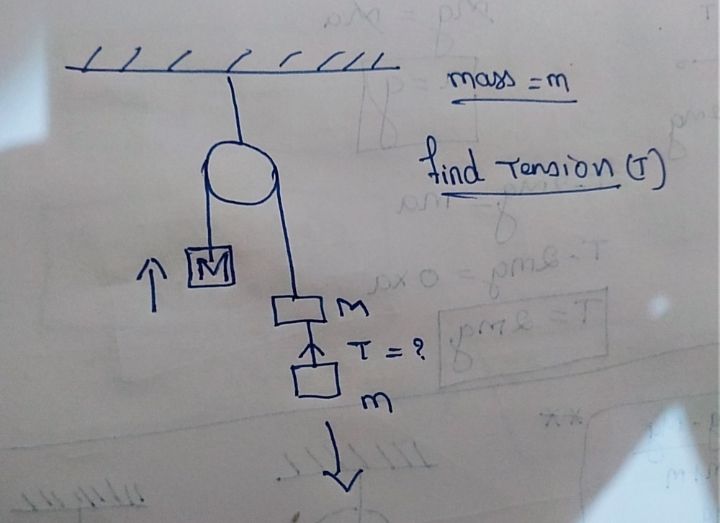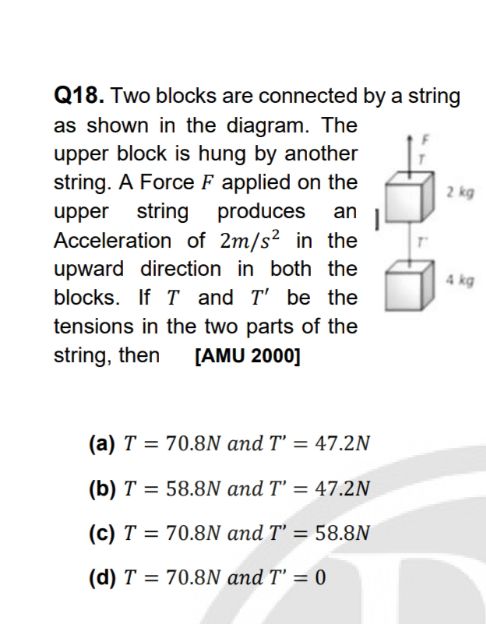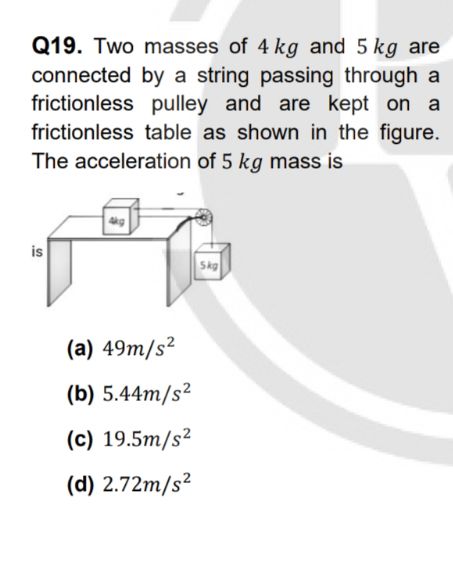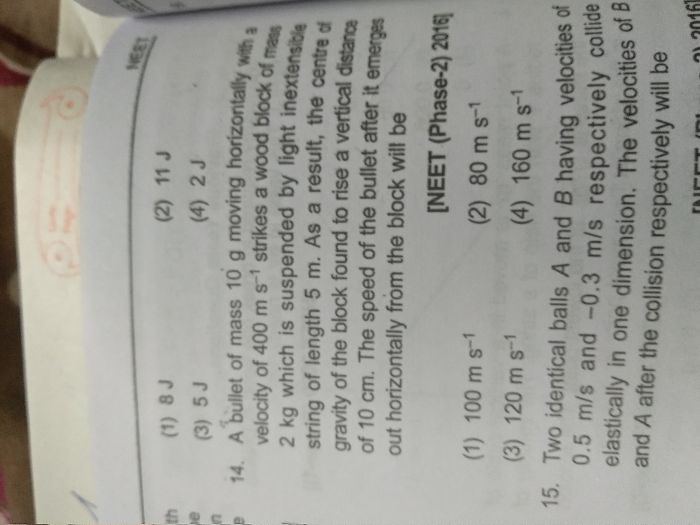Laws of Motion
Law of Motion PDF Notes, Important Questions and Synopsis
SYNOPSIS
- Force, by its nature, is better understood as any influence that causes an object to undergo a certain change, which may be with respect to its movement, direction or even geometrical construction. As mandated for a vector quantity, force has both magnitude and direction.
- Galileo extrapolated simple observations on the motion of bodies on inclined planes and arrived at the law of inertia. Newton’s first law of motion is the same law as the law of inertia. According to it, an object acted upon by no net force will remain at rest or continue to move with a constant velocity and zero acceleration.
- The tendency of an object to remain at rest or continue to move at a constant velocity is called inertia.
Inertia of rest: The inability of a body to change its state of rest by itself.
Inertia of motion: The inability of a body to change by itself its state of uniform motion.
Inertia of direction: The inability of a body to change by itself its direction of motion. - The frame of reference in which Newton’s first law is valid is called the inertial frame of reference.
- The frame of reference in which Newton’s first law is not valid is known as non-inertial frame of reference. These are accelerating reference frames.
- The momentum (p) of an object is a vector quantity and is defined as the product of its mass (m) and velocity (v), i.e. p = mv.
- Newton’s second law: The rate of change of momentum of an object is equal to the net external force and takes place in the direction in which the net force acts.
- The net external force on an object is equal to its mass times the acceleration, i.e. F = ma.
- Impulse is the product of average force and time and equals change in momentum.
- Newton’s third law of motion: To every action force, there is always an equal and opposite reaction force. When object 1 exerts a force on object 2, object 2 must exert a force on object 1 which is equal in magnitude and opposite in direction.
- Action and reaction forces act on different bodies, and so, they cannot cancel each other.
- Law of conservation of momentum: The total momentum of an isolated system of particles is conserved. The law follows from the second and third laws of motion.
- If an object is at equilibrium, then the net resultant force acting on it is zero.
- The normal reaction is the contact force perpendicular to the surface in contact.
- Tension force is the restoring force in the rigid inextensible string or rope when being pulled down.
- Centripetal force is always directed along the radius towards the centre.
- A free body diagram is a diagram showing the chosen body by itself and free of its surroundings.
- Points for which one should be careful about while drawing free body diagrams:
- Include all the forces acting on the body.
- Do not include any force which the chosen body exerts on any other body.
- Direction of tension should be along the string and away from the body/object under consideration.
- Equilibrium:
Equilibrium is the condition of a system, when neither its state of motion nor its internal energy
state tends to change with time.
Static equilibrium: When a body is at rest under the influence of external forces acting on the it.
Dynamic equilibrium: If net external force is zero, but the velocity of a body is not zero, i.e. the body moves with a constant velocity. - Pseudo force:
Non-accelerated frames of reference are called inertial frames, whereas accelerated frames are called non-inertial frames. In order to make Newton’s laws applicable for non-inertial frame, a fictitious inertial force or pseudo force is applied on the body. The magnitude of this pseudo force is equal to the product of mass m of the body and acceleration a of the reference frame and its direction is opposite to the acceleration of the frame. - Maximum value of static friction
fs,max µ R
fs,max = ms R
Here, fs,max is the limiting value of the static friction, R is the normal reaction and ms is the coefficient of static friction. - Static friction increases with the applied force till it reaches a maximum value of Fs,max.
- Kinetic friction
fk µ R
fk = mk R - Here, fk is the limiting value of the static friction, R is the normal reaction and mk is the coefficient of kinetic friction.
- The horizontal component of contact force equals the force of friction.
- The limiting value of static friction is greater than the limiting value of kinetic friction.
- The force required to initiate the motion in a body should be greater than the force required to maintain the motion with uniform velocity.
- The direction of frictional force is always opposite to the direction of the relative motion between the two surfaces.
- Uniform circular motion
If a particle moves on a circular path with constant speed, its motion is called uniform circular motion. In this type of motion, angular speed of the particle is also constant. In uniform circular motion, the particle will have acceleration towards the centre only and is called centripetal acceleration having
Magnitude

- Non-uniform circular motion
The speed of a particle moving in a circle is not constant, then the acceleration has both radial and tangential components. These radial and tangential accelerations are given as:
Magnitude of the resultant acceleration:
- Centripetal force: The net radially inward force experienced by the particle when it undergoes circular motion is called centripetal force. Centripetal force is not special force; it can be any field force such as gravitational force, electrostatic force etc. This can also be a constant force such as friction, normal reaction etc.
- Centrifugal force: It is an imaginary or pseudo force which arises from the rotation of the reference frame.
Download complete content for FREE 
NEET - Physics
Asked by sahilsalam2006 | 28 Dec, 2023 09:30: AM
NEET - Physics
Asked by shrutishrivastava2505 | 04 Dec, 2023 11:55: AM
NEET - Physics
Asked by beuradeshraj | 20 Jan, 2023 10:40: AM
NEET - Physics
Asked by Lashkkkuer | 28 Sep, 2022 08:03: PM
NEET - Physics
Asked by adititiwari601 | 08 Jun, 2022 10:49: PM
NEET - Physics
Asked by adititiwari601 | 08 Jun, 2022 10:48: PM
NEET - Physics
Asked by reebageorgetcr | 19 Oct, 2021 09:43: PM
NEET - Physics
Asked by vbindu2806 | 20 Jul, 2021 04:06: PM
Related Chapters
- Physics and Measurement
- Kinematics
- Work, Energy and Power
- Rotational Motion
- Gravitation
- Properties of Solids and Liquids
- Thermodynamics
- Kinetic Theory of Gases
- Oscillations and Waves
- Electrostatics
- Current Electricity
- Magnetic Effects of Current and Magnetism
- Electromagnetic Induction and Alternating Currents
- Electromagnetic Waves
- Optics
- Dual Nature of Matter and Radiation
- Atoms and Nuclei
- Electronic Devices
- Communication Systems

